How To Keep Ski Goggles From Fogging
A quality pair of ski goggles tin can practise a lot to amend visibility on the slopes, but if they get all fogged upwards, it doesn't really affair what y'all're wearing. The good news is that there are a number of steps you can take to avoid this frustrating situation, which we intermission down below. The primary aim is to keep air flowing and limit wet buildup, and a range of factors—from avoiding overdressing to assuasive your goggles to dry out completely later each employ—come into play. Finally, if your old pair has flake the dust, check out our commodity on the best ski goggles.
Why Do Goggles Fog Up?
Earlier diving in, it's important to understand why goggles fog up in the beginning identify. The science is adequately simple: When warm and humid wet enters your goggles and comes into contact with the cold lens, the water vapor condenses into droplets and accumulates. Many of the tips below are aimed at maximizing ventilation to reduce the amount of moisture entering your goggles and minimizing whatever temperature differences betwixt the within of your lens and outside environment. Other preventative measures include proper drying and storage techniques to preserve your goggle'due south anti-fog coating, which can go a long way in retaining long-term optical clarity.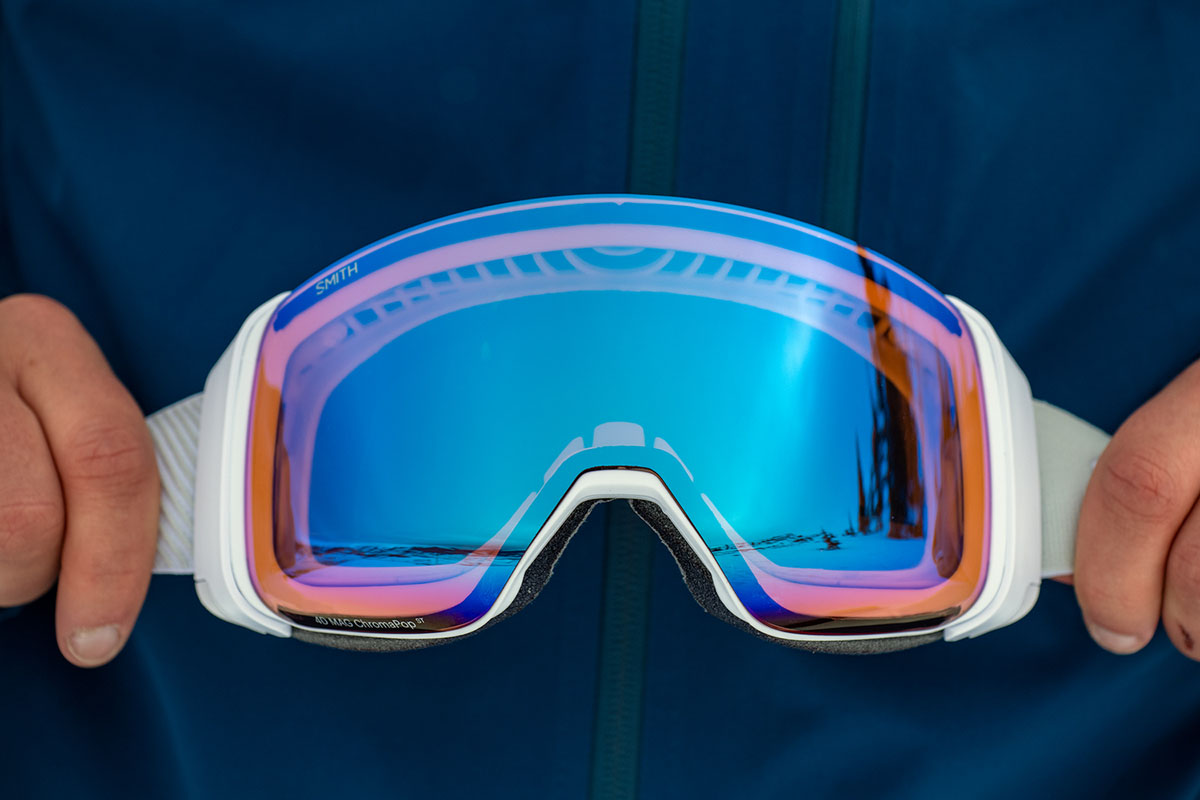
Fog Prevention Tips
1. Cull a quality pair of goggles
The first footstep in minimizing fogging issues is to cull a quality snow goggle with well-executed ventilation. First and foremost, you'll want to make sure you opt for a model with a double lens—similar in concept to a double-pane window—which the vast majority of modern designs take. Frame blueprint is also of import: If air tin can move effectively through the sides, top, and bottom of the goggles, condensation won't be able to build up as quickly inside. All else beingness equal, a goggle with more than vents will fog upwardly less frequently than i with fewer, although it's also important to make certain that the helmet yous plan to wear doesn't block your goggles' vents (we recommend trying them on together).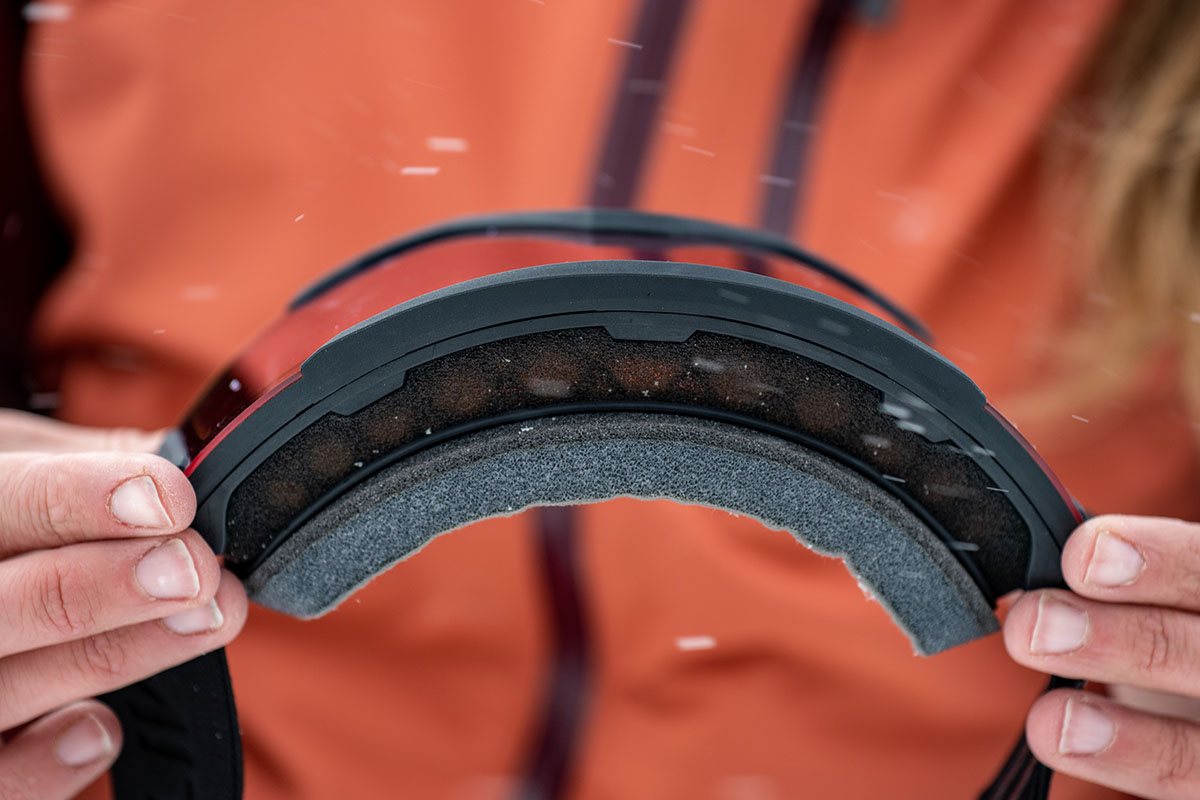
A terminal piece of the goggle blueprint puzzle is the anti-fog coating. This hydrophilic (i.due east., wet-attracting) barrier is applied to the inside of the lens and designed to disperse any moisture across the surface then that light can still brand its mode through (any water that accumulates volition be motion picture-like rather than droplets, which makes it much easier to run into). Nosotros've found Smith's anti-fog treatment to exist particularly efficient and long-lasting, and it's featured on models from their premium I/O Magazine to the budget-friendly Range. Plenty of others excel here as well, including Betimes and Oakley. To maximize effectiveness, you'll want to brand sure to get a skilful fit with a solid, gap-gratuitous seal at your forehead and cheeks. And go on in listen that any excess cloth inside your lens will bear on airflow, so if yous want to article of clothing glasses under your goggles, consider purchasing prescription inserts from a brand like SportRx or wearing contacts instead.
2. Pair with a well-ventilated helmet
Goggles are merely i part of the equation, and a well-ventilated ski helmet tin help considerably with keeping air moving and you from overheating. The first indicator of overall ventilation is the total number of vents, with pricier lids typically boasting more than budget designs. For instance, Anon'due south top-of-the-line Merak ($320) features a generous nineteen vents, while their upkeep-friendly Raider 3 ($90) has only half dozen. Another key distinction to look out for is whether or non the vents are adjustable. Stock-still vents can let unwanted wet and common cold air within, while adjustable vents allow y'all to better regulate temperature depending on output and weather. Taken together, an effective helmet venting system should directly air from your goggles through intakes at the front and release the heat out the meridian and back.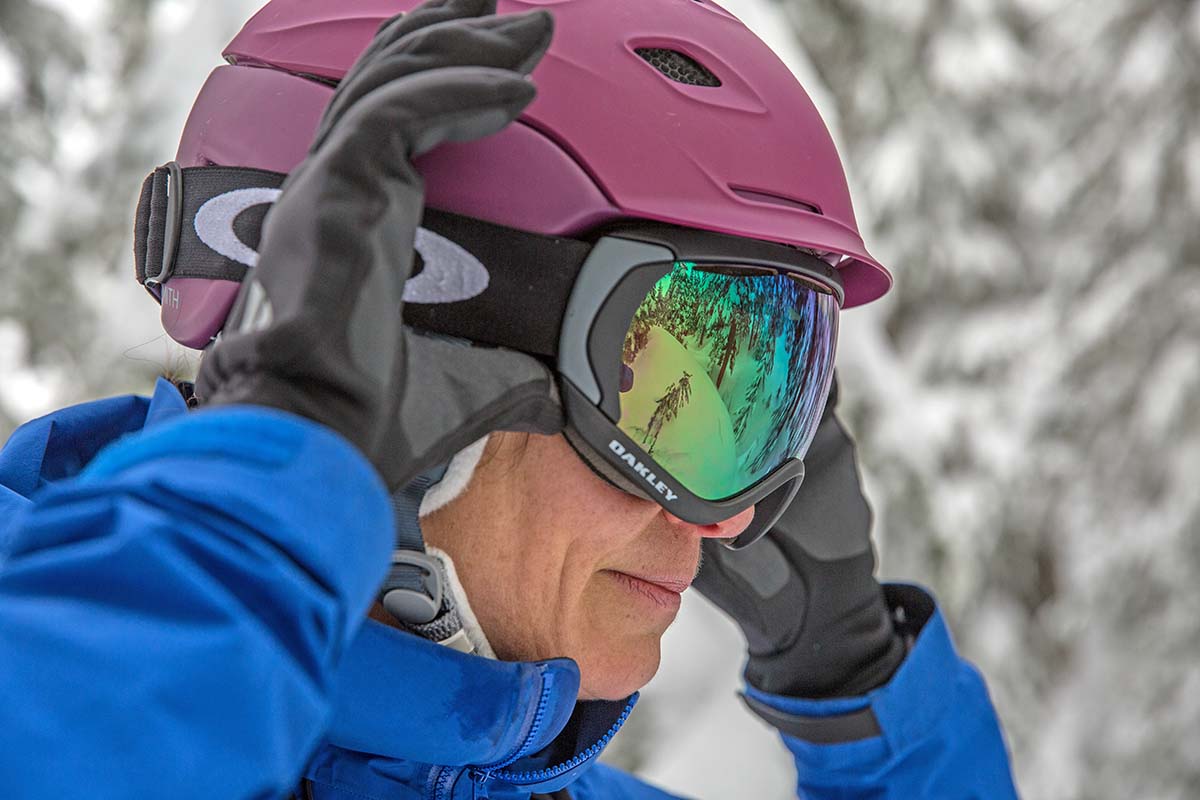
3. Resist wiping the inner lens
We've all been tempted to popular our goggles off and wipe snow or moisture off our inner lens on inclement days or after a autumn, but be forewarned: This can cause impairment. In addition to potentially scratching or smudging a pricey lens, wiping likewise can dethrone your goggle's anti-fog coating or flick. Equally hard as information technology may be, nosotros recommend assuasive your goggles to air dry out whenever possible.
Many premium options also come with an included micro-fiber storage bag or wipe, which can help blot light pulverization off or clear upwards any water streaks if the state of affairs is particularly dire. Never scrub or use paper products like paper towels or napkins, every bit these are much more than annoying and tin damage your lens. Smith offers a couple cheap solutions in their NoFog cloth (coated in a strong detergent to keep your lens clean) and Snow Eraser (a soft sponge to wipe away wet). But again, leaving your lens alone when it gets wet is the safest bet for boosting its lifespan and preserving the anti-fog treatment (nosotros encompass the reapplication process below).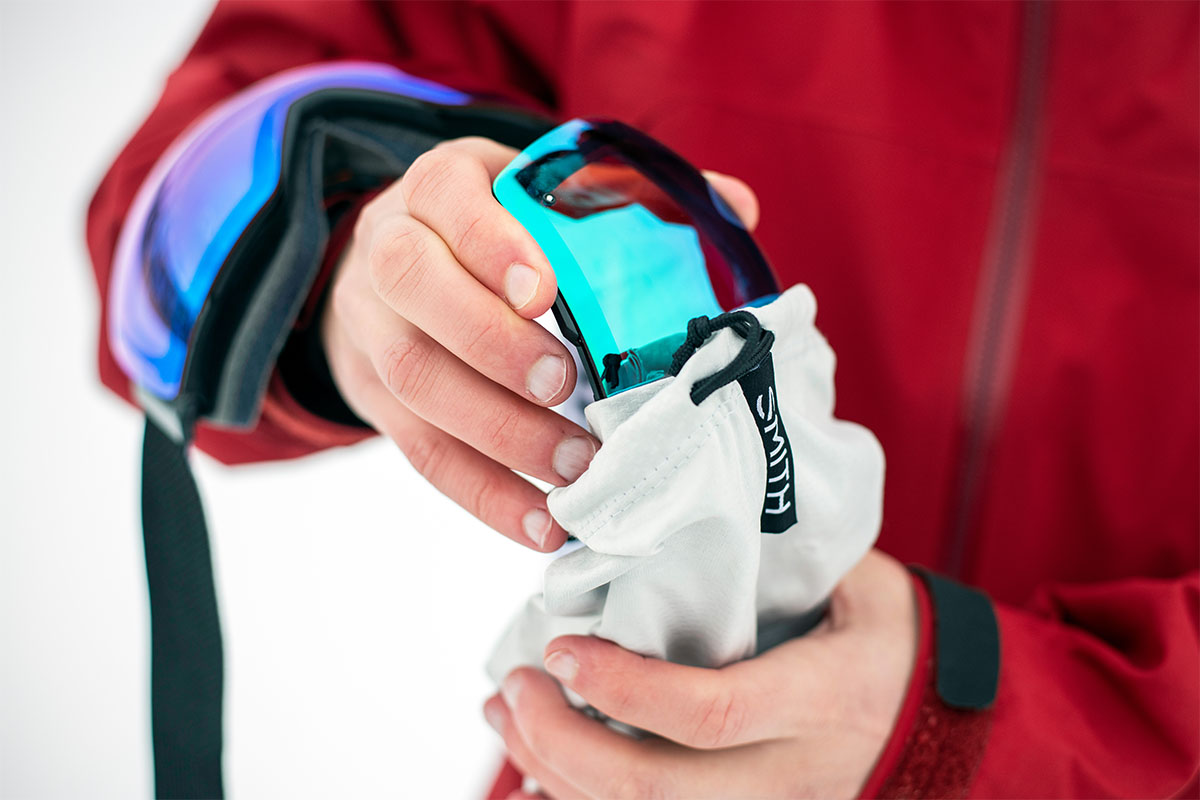
4. Avoid putting your goggles on top of your helmet
As we covered above, your goggles and ski helmet work equally an integrated unit to motion air up and abroad from your face up. Moving your goggles to your forehead volition cause the rut and moisture emanating there to fog upward (remember that heat rises), so it's of import to keep your goggles on during the ski solar day. If you're dealing with an uncomfortable fit or visibility problems from fogging or fingerprints, we've found that carefully lifting them off our face up slightly for a few seconds (a good chairlift action) can make a world of difference. If it's an ongoing problem, try popping into the nearest order to permit your goggles dry out completely before advisedly and gently dabbing or blotting any problem areas with a microfiber material or running them under a hand dryer (proceed them a considerable distance abroad, as too much oestrus can be detrimental).
5. Continue the vents articulate of snowfall
Keeping your goggle and helmet vents free of snow and other debris volition assistance them perform at their best, as any blockage volition inevitably inhibit some of the venting abilities. If your ski gloves have snowfall on them, be sure to brush information technology off before touching your confront or making any adjustments to your helmet or goggles. Later on a autumn, information technology might be necessary to take either or both off and advisedly tap them to clear whatever excess moisture. And again, think never to wipe wet goggles with gloves—this will only exacerbate fogging issues and potentially crusade irreversible damage to the lens.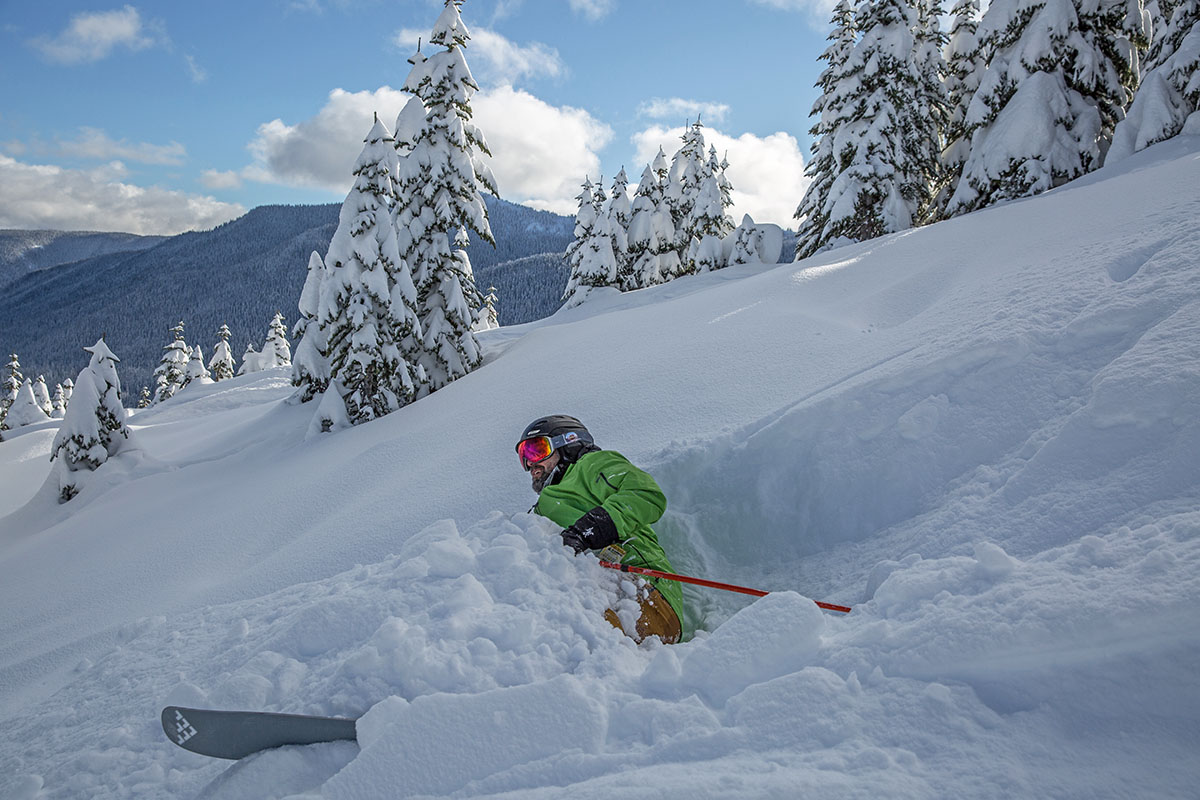
6. Don't overdress
Overdressing is a quick way to build upwardly backlog rut, which will inevitably atomic number 82 to condensation buildup. If your layering organization isn't tuned properly for the conditions, this can cause your torso, face up, and head to sweat more, which makes it harder for your goggles and helmet to go along up with temperature regulation. Our go-to ski kit typically includes a quality moisture-wicking baselayer, appropriately insulated midlayer (fleece, down, or synthetic), and protective and breathable hardshell or uninsulated ski jacket overtop (we look for ones with pit zips to dump backlog heat quickly). Those who run cold or ski in particular frigid areas might consider opting for an insulated ski jacket or iii-in-ane blueprint, but nosotros really value the ability to shed layers as conditions (and our output level) shift.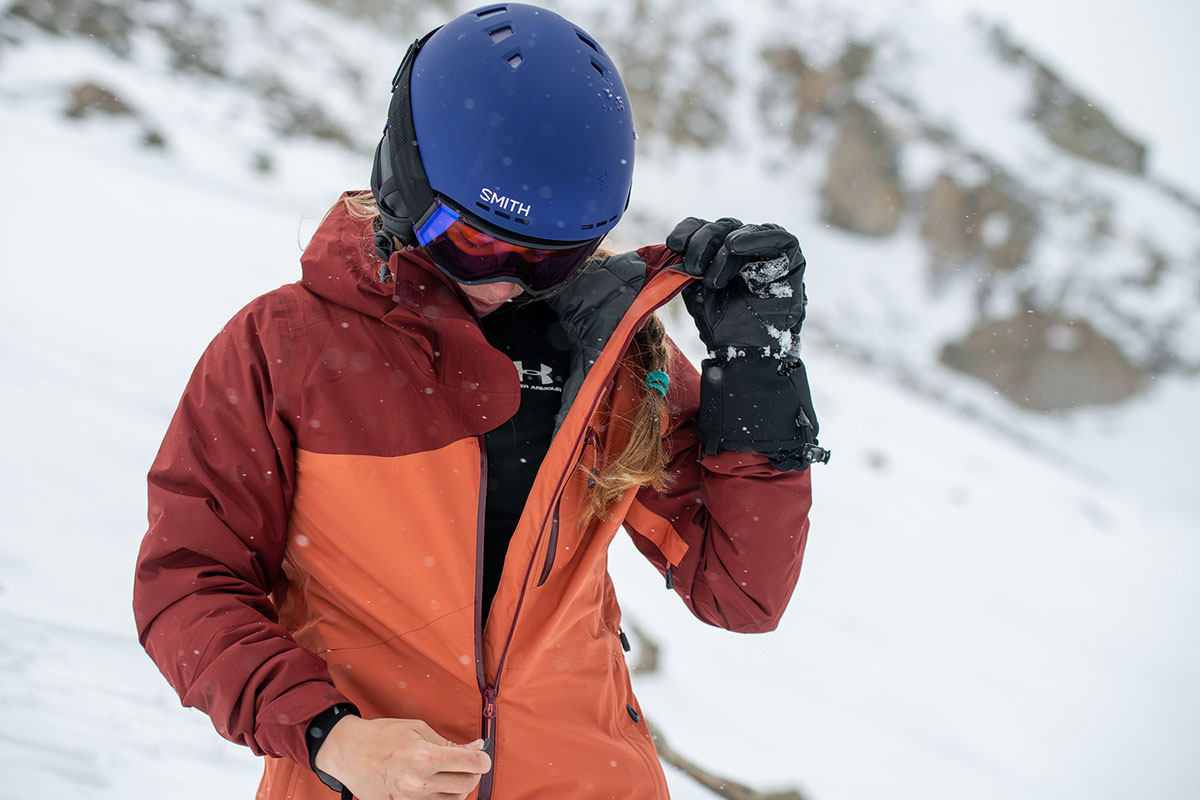
7. Keep moving
This one might seem fairly obvious, but staying in move keeps air flowing and therefore minimizes the run a risk of running into fogging issues. It's not e'er possible, but if you're dealing with persistent temperature control bug, try seeking out longer runs or shorter chairlift lines. The circulation of colder air effectually your confront will help excess moisture evaporate quicker.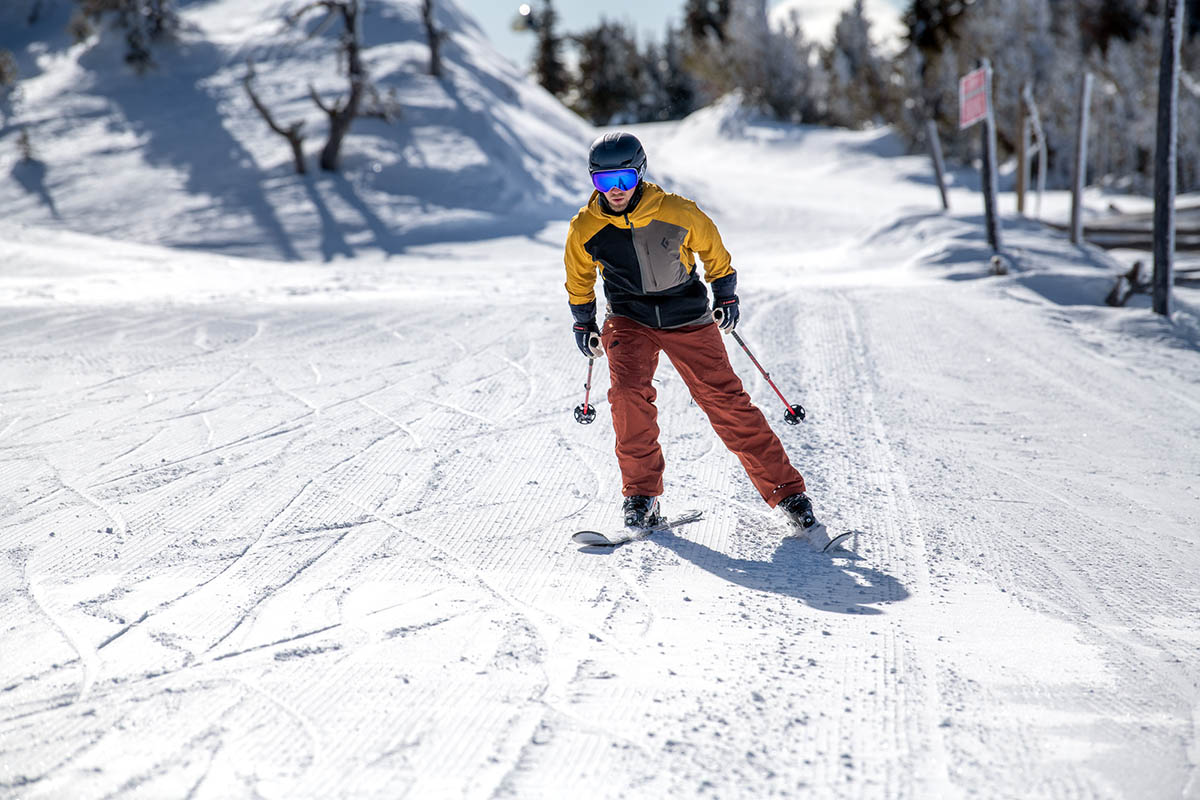
8. Apply a mask or balaclava that breathes well
Many skiers use a buff or cervix gaiter to keep their neck and lower face covered and protected from the elements, but the downside is that warm breath tin can sometimes exist diddled up into your goggles and fog up your lens. Utilizing a light and breathable design is the start stride toward minimizing condensation buildup. Nosotros like Smartwool's Merino 250 for its odor-resistant properties and soft feel, and Buff's Original Multifunctional balaclava is a proven constructed alternative that breathes very well. And a last notation: You might be tempted to tuck your cervix gaiter into your goggles on cold days, but this will almost inevitably lead to moisture, moist particles from your breath making their way up and into your lens. If possible, continue a small gap between your goggles and mask to maintain a pathway for hot air to escape.
9. Go on a fill-in pair or lens handy
If all else fails, it'southward always helpful to take a backup pair of goggles or an extra lens handy. It doesn't accept to be anything fancy—if your goggles are fogged up, fifty-fifty an ultra-cheap pair will probably be a step upwardly in terms of visibility and work long plenty for your become-to pair to dry completely. Bolle'southward Freeze is a proven upkeep option that will become the job done for but $35. Many high-end snowfall goggles besides come with ii lenses, so swapping them out tin exist a viable solution provided the conditions allow for it (some tints aren't suitable for socked-in or bluebird days). When making the change, merely be mindful to limit contact with the lens with your hands or gloves.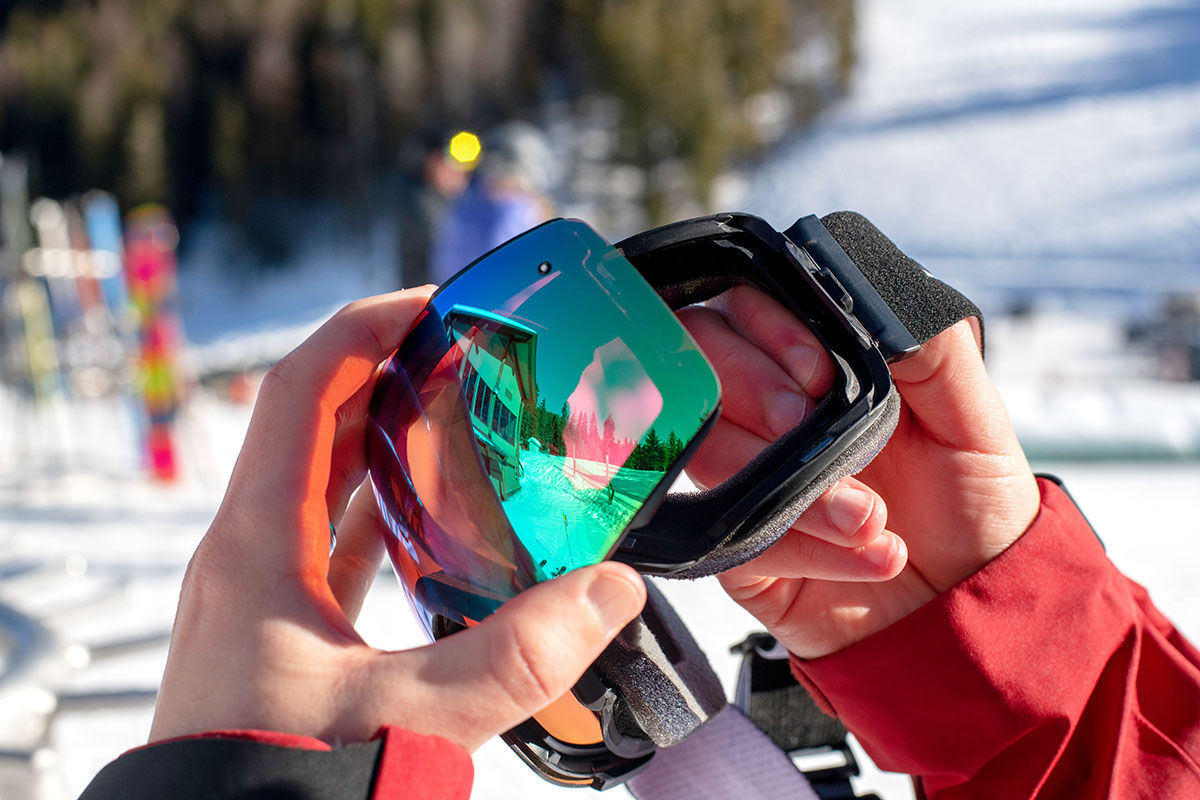
10. Let your goggles dry out at the end of the twenty-four hour period
Proper care and storage are critical for keeping your goggles in prime condition, and the all-time do is to let them dry out completely at the end of each ski day. We advise placing them on a clean surface in a dry, warm place and letting gravity do the rest of the work. Be sure not to leave damp goggles in your cold automobile or buried in your ski bag overnight, and avoid using a accident-dryer to expedite the process (again, as well much oestrus can potentially degrade the anti-fog treatment). Once dry, it's best to store your goggles in a microfiber or hard-sided case to prevent dust and other debris from accumulating on the lens when not in use. This volition too aid limit scrapes or scratches from packing them with other gear.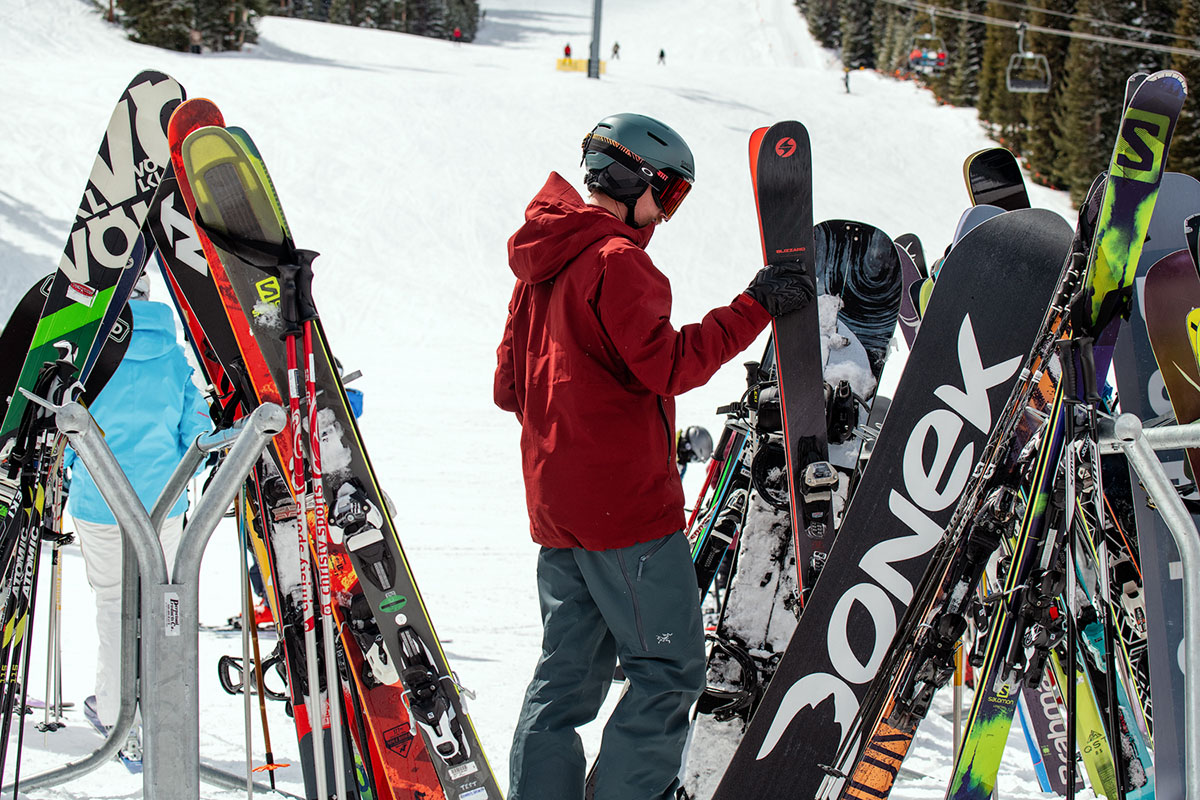
11. Reapply an anti-fog blanket to quondam goggles
If y'all're post-obit the tips above and your old goggles continue to fog up, information technology may very well be time for you to buy a new pair. For the DIY-inclined amongst us, nonetheless, it may exist possible to go a little more than life out of your goggles by reapplying an anti-fog handling. Go along in mind that results tin vary depending on factors like historic period and condition of your goggles, and at that place's no standardized method or product for reapplication, so information technology could take some time to detect something that works (and again, there'southward a possibility that information technology might not for long or at all).
As a showtime step, we recommend reaching out to the manufacturer straight to see what they recommend. Optics specialists Warby Parker and Zeiss both make spray-on treatments with a number of good reviews to their name, and ii other pop options are Optix 55'due south Fog Gone and EK USA'due south True cat Crap balm. Be sure to follow the instructions carefully and only use soft, nonabrasive microfiber cloths to work in whatsoever coating. If your lenses are scratched or damaged in whatsoever fashion, y'all can attempt polishing with a production like Meguiar's PlastX Clear Plastic Cleaner & Smoothen (commonly used for headlights) or PolyWatch'due south Crystal Glass Polish & Scratch Remover (designed for polishing watches), but these tend to only work on minor surface scratches. In the stop, the only certain-burn down fashion of restoring clarity entirely is to buy a new pair or replace the lens, but we can appreciate the value in extending your gear's lifespan for as long as possible.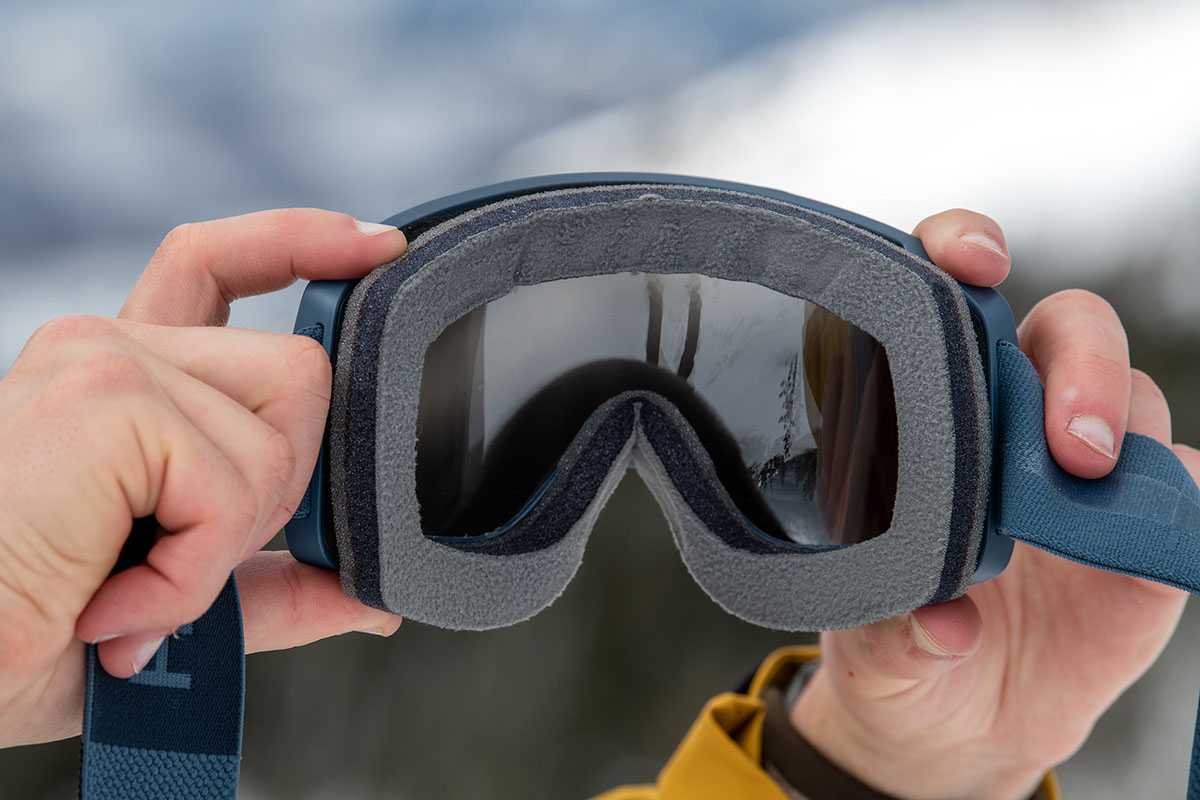
12. Anti-fogging tech: Smith'south Turbo Fan and Julbo's SuperFlow
We covered anti-fog coatings to a higher place, just at that place are a couple other innovative fog-prevention technologies worth calling out straight. Showtime is Smith'due south Turbo Fan featured in their tactical Outside the Wire goggle, which utilizes a pocket-sized electronic frazzle fan to move air away from the inside of the lens. The unit itself is well integrated along the side of the goggle, but it does add a good amount of bulk and give off a adequately polarizing and utilitarian look.
For those with persistent fogging issues during down times (such as on the elevator) or if yous desire to wear your goggles during high-output activities like ski touring or sidecountry hiking, Julbo has another an innovative solution with their SuperFlow engineering found on premium models like their Aerospace and Airflux. With hinges on the sides of the frame, you can push the lens away to create plenty separation to quickly dissipate wet and avoid fog buildup. You'll need to push button the lens back into identify on the downhill, but as we covered above, fogging is less of an issue when you're moving at a skilful clip.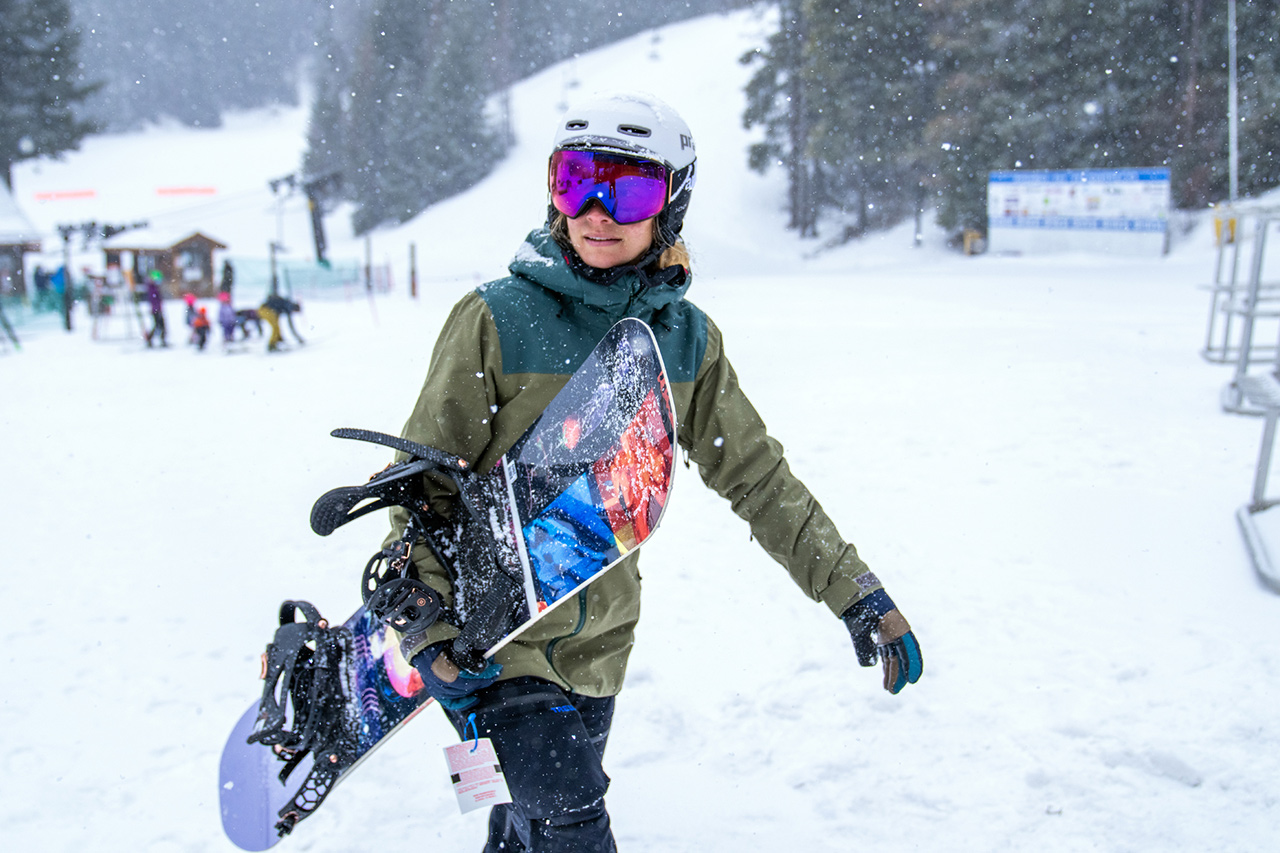
Our Top Ski Goggle Picks
If you're yet looking for the perfect pair of goggles for this flavor, below are our top picks across various categories, from budget-friendly to backcountry-ready. For a more comprehensive list, as well equally detailed background information and buying advice, encounter our commodity on the all-time ski goggles of 2022-2023.
- Best Overall Ski Goggle: Smith I/O Mag ChromaPop
- All-time Budget Ski Goggle: Smith Range
- Best Interchangeable-Lens System: Anon M4 Toric MFI
- Best Goggle with Photochromic Lens: Glade Adapt ii
- Best Large-Frame Ski Goggle: Oakley Flight Deck L
- For Maximum Field of View: Smith 4D Mag
- Most Ventilated for Backcountry Skiing: Julbo Aerospace
Dorsum to Our Anti-Fogging Tips See our Ski Gear Reviews
Source: https://www.switchbacktravel.com/how-to-prevent-ski-goggles-fogging

0 Response to "How To Keep Ski Goggles From Fogging"
Post a Comment